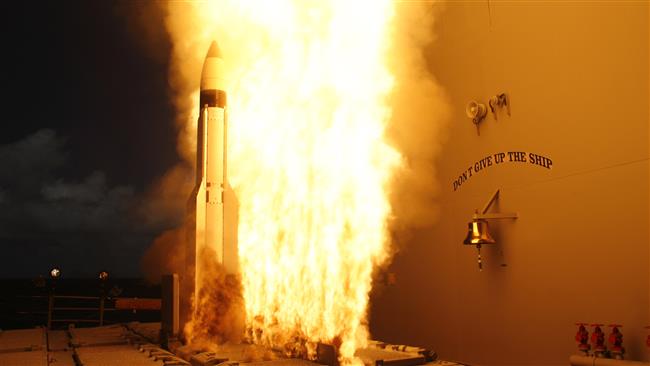North Korea used a new missile: US intelligence
US intelligence agencies have described the latest missile launched on Tuesday by North Korea as a new kind of missile that had not been seen before.
CNN on Wednesday cited a US intelligence official as saying the new missile is a new two-stage rocket.
The first stage of the weapon was identified as a KN-17 liquid fueled missile, which is well-known to US intelligence and was previously used by North Korea.
US satellites had detected the KN-17 missile that was being prepared for launch.
However, at some point prior to launch, the North Koreans attached a second stage atop that missile.
Read More:
The focus now is on the capability of that second stage, and how it technically contributed to making Pyongyang's latest test its first ever intercontinental ballistic missile (ICBM) launch.
The second stage had a separate 30-second burn cycle, which allowed the missile to travel the extra distance to classify it as an ICBM.
North Korea announced on Tuesday it had successfully tested the missile, which Pyongyang claimed could "reach anywhere in the world."
North Korean state media said the missile reached an altitude of more than 1,741 miles, before it splashed down in the sea off the Korean Peninsula 930 kilometers (578 miles) from the launch site.

The US military, however, said on Wednesday it was capable of defending the US mainland against the "nascent" threat posed by the new ICBM.
Pentagon spokesman Navy Captain Jeff Davis noted a successful test last month in which a US-based missile interceptor had knocked down a simulated incoming North Korean ICBM.
VIDEO | Former FBI agent criticizes US Congress for 'outright corruption'
IRGC chief urges Muslim countries to cut aid routes to Israel
'New chapter in cooperation': Iran, Venezuela sign new MoUs
Jordan sentences former lawmaker for supporting Palestinian resistance
Basij volunteer forces hold massive drills in southwestern Iran
Israeli war criminals 'not welcome', US city says after ICC ruling
US vetoing of Gaza ceasefire resolution ‘disgraceful’: Iran’s UN envoy
VIDEO | IAEA adopts anti-Iran resolution tabled by E3

















 This makes it easy to access the Press TV website
This makes it easy to access the Press TV website